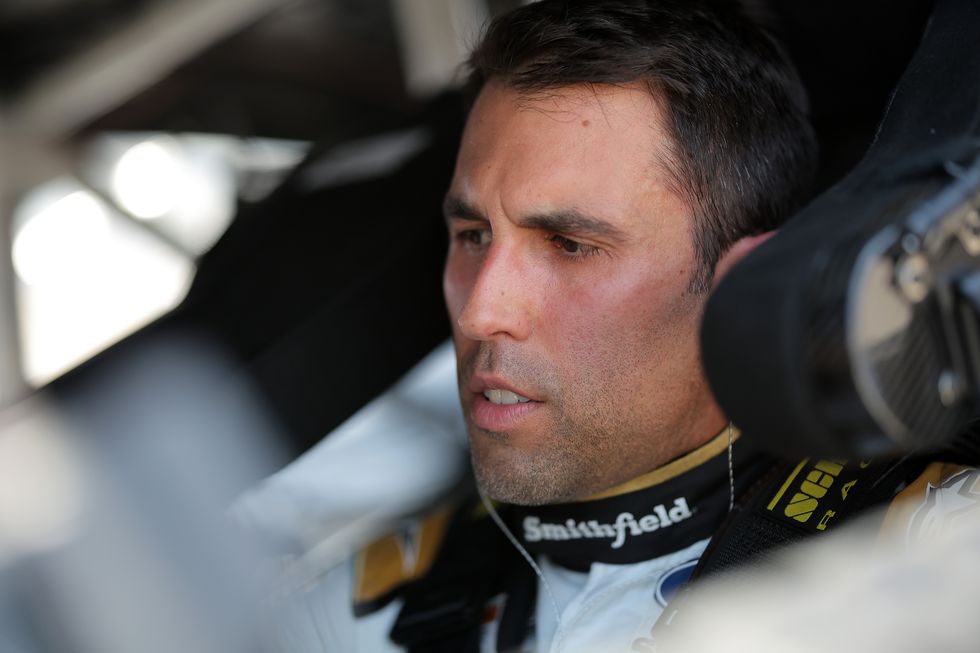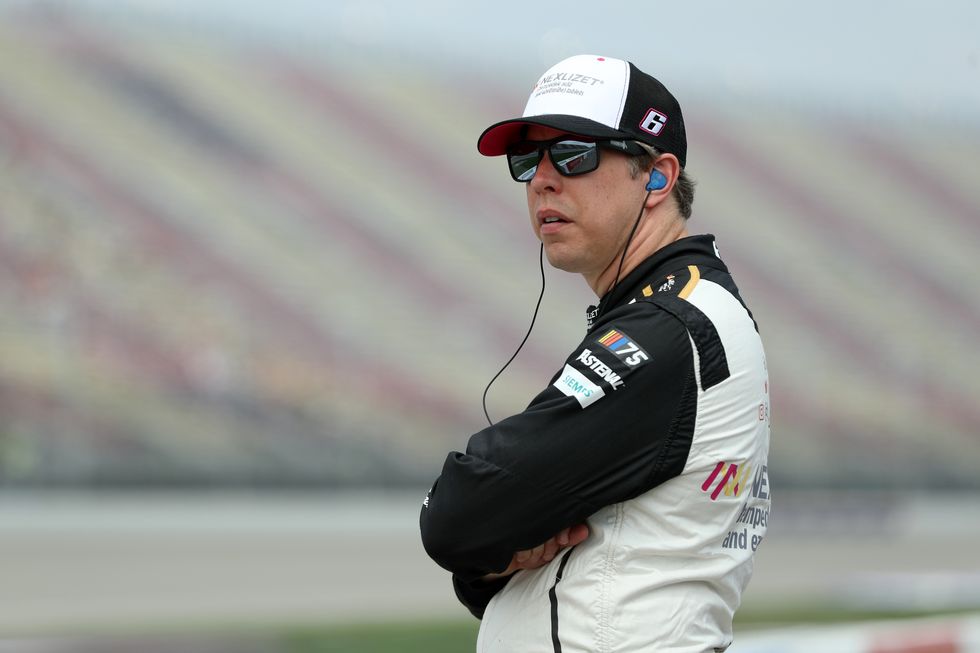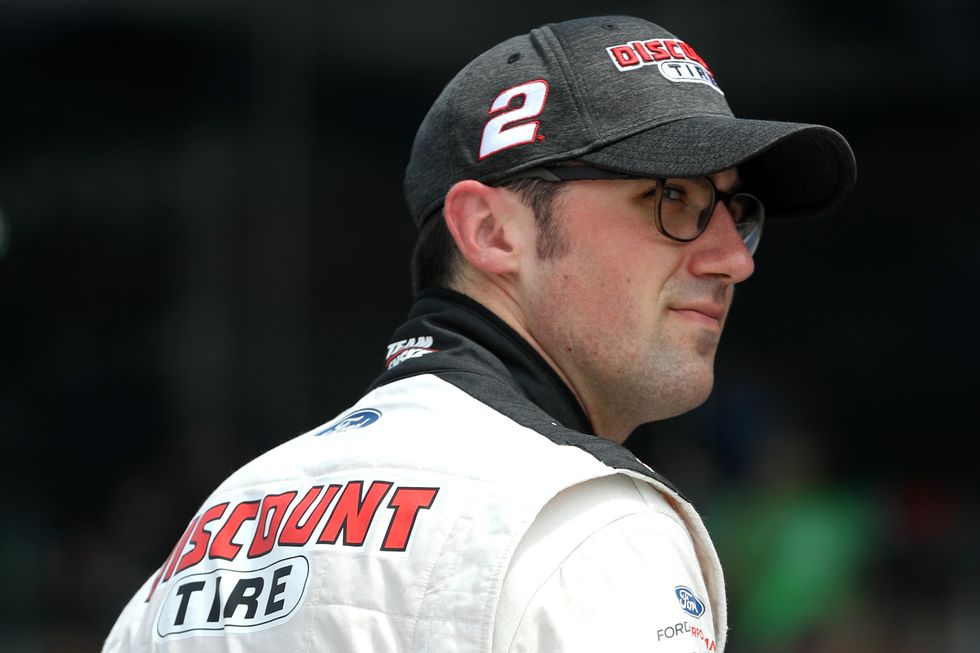While the NASCAR Cup series race at Michigan International Speedway won’t be completed until Monday due to rain, there were 74 laps run on Sunday after a one-hour, 43-minute delay, caused by a rain shower that halted the field during pace laps. A lot happened in those 74 laps and Tyler Reddick will lead the field to the green when the race resumes Monday at noon.
Points No Longer an Option for Chase Elliott
Ever since Chase Elliott returned from a broken leg early in the season, he has maintained he must win to gain a berth in the playoffs.
Gaining entrance via points was still a possibility with four races remaining in the regular season, but that option evaporated Sunday after just 34 laps in the FireKeepers Casino 400 at Michigan International Speedway when his Chevrolet slammed into the second-turn wall.
“It was really early in the day to have a tire blow like that,” Elliott says. “It was really weird. It’s a bummer, but not surprised.”
Elliott said he had no warning he had a tire problem, and he didn’t believe he was being hard on it.
Elliott’s 36th-place finish in the 37-car field marks the first time he has finished lower than 13th since the Coca-Cola 600 in May at Charlotte Motor Speedway.
Berry, Byron, Busch Make Early Exits
Kyle Busch, William Byron and Josh Berry surprisingly exited Sunday’s rain-delayed FireKeepers Casino 400 at Michigan International Speedway in the 200-lap race’s first 50 laps.
Busch exited the event at the 2-mile track just 14 laps into the race.
“I put myself in a bad spot,” Busch says about his side-by-side duel with Ryan Blaney. “We touched a little bit and that’s when you lose all the air, and you spin out.
“I tried to make a move and in the old days, guys that you were racing would let you go and have that spot and work for it later. But in this day and age, it’s completely different. So, I got a guy that ran on my outside and took the air off.”
Busch had to settle for a last-place finish in the 37-car field.
This content is imported from youTube. You may be able to find the same content in another format, or you may be able to find more information, at their web site.
Byron exited the race at the end of the first stage when his Chevrolet pancaked the wall.
“I just got loose trying to get stage points,” says Byron, who completed 46 laps. “We were dicing it up. We didn’t have the best restart, so we were gaining spots back, but just tried too hard.”
Byron was credited with a 35th-place finish.
Berry, substituting for a suspended Noah Gragson, lost control of his Chevrolet at the beginning of Stage 2 when the race returned to green-flag conditions following the stage break. Berry, who was 16that the time, said he had no warning that his car was going to break loose and spin.
“I just got loose there and backed it into the wall,” Berry says. “Just hate it that we didn’t get to run all the laps today because that was the main goal. I’ll just go back and look, learn and see what I can do better.”
Berry’s exit after 50 laps left him 34th in the race scheduled to be completed at noon on Monday.
Hydration Isn’t A One Day Process
Competing during the hottest summer on record means proper hydration is critical for race car drivers and Aric Almirola says it’s not a race morning process.
“That’s something that I’ve focused on for many years,” Almirola says. “You’ve got to have the right mindset for the entire week going into the race weekend that you’re going to be hydrated and your electrolyte levels and everything is going to be topped off going into the weekend.
“I’ve probably been working through my nutrition and my exercise routine and all my hydration for probably 10 plus years. So, I’ve got it pretty dialed in on what works best for me. I know what my sodium content is. I know typically how much sodium, potassium, magnesium I lose throughout the course of a race.”
Almirola says he doesn’t have an issue with decision fatigue towards the end of a race because he’s adapted to the longer races as he’s progressed through his career.
“I’ve been racing since I was 8 years old,” Almirola says. “Every progression you make from go-kart racing to late model racing to truck racing to Xfinity you keep building that capacity for split-second decision making.”
Almirola notes that those who have not developed the ability to remain mentally sharp until the end of a lengthy Cup race don’t have a chance at victory.
“The race is won at the end. It’s not won at the beginning,” Almirola says. “So, having the right hydration and fitness program and making sure that you are at your optimum still at the end of a three-hour race is crucial because that’s when the race is won and lost. Making sure your mental fortitude is there for three hours is important.”
Driver Salary Not Majority of Team Budget
While a driver is the face of a race team, Brad Keselowski says that a person’s salary is usually 25 to 33 percent of a team’s budget.
“If you say, 66 to 75 percent of your team’s budget isn’t the driver, that shows you how many pieces it takes to run and be successful,” team co-owner Keselowski says.
Keselowski, the driver, said he realized he was just one of the many pieces comprising a team several years ago.
Veteran Drivers Set the Racing Etiquette Standard
NASCAR Cup veterans have complained about the young drivers’ aggressiveness this year, but 24-year-old Austin Cindric says it’s the veteran drivers that set the standard.
“I wouldn’t say I’m in a position to set the stage for what’s acceptable and what’s not, but someone that has influence in the series and pedigree, those are the type of people that young racers look up to,” Cindric says.
Cindric notes a youngster might choose the number five for their quarter midget because that’s Kyle Larson’s number, or the number 12 because it’s Ryan Blaney’s.
“That’s the impact that we have, and I don’t think we put that in the mind,” Cindric says. “That is what affects how others race, how drivers race in the Xfinity Series, how drivers race in the truck series. What are the veterans doing? That is the standard. If the veteran drivers are being very respectful, then that’s the standard.”
Cindric emphasized it’s quite simple – “race the way you want to be raced.” He says the tactics used during a race are determined by “whatever suits your narrative.”
“When you have status and you have respect, that changes when you change how you race,” Cindric says.
Read the full article here






